Clancy Tucker's Blog, page 123
March 11, 2019
13 March 2019 - Dr. KESHAB MANDAL - GUEST AUTHOR
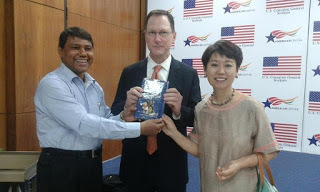
Dr. KESHAB MANDAL - GUEST AUTHOR& ACADEMIC -
G'day folks,
Today, I interview an academic and author from India.
Welcome, Dr. Mandal ...
1. TELL US A LITTLE ABOUT YOURSELF AND YOUR WRITING JOURNEY.At present (from 2015- till date) I am the Head Master of a Government sponsored High School in Kolkata, India. Also I taught Political Science at a Government College in Kolkata as a guest lecturer. Since 2001 I have taught Political Science at a Government Higher Secondary school in the district of Paschim Medinipur, India. Along with teaching profession, I continued research since the beginning of the new Millennium. I completed my Ph. D. In the year 2009 from Vidyasagar University, West Bengal, India on “Empowerment of Women and Panchayati Raj : Perception and Reality – A Case Study of Rural Midnapore”. Since 2006 I started publishing books and articles. At present I am the author of 10 books, three monographs and more than four dozens of articles. Some of my articles have been published in national and international academic and peer reviewed journals, magazines and newspapers. I was also the editor-in-chief of an e-magazine and a Bengali newspaper. Presently I am on the editorial board of The World United, a monthly e-magazine. I have presented papers and delivered lectures in more than a dozen national seminars, conferences and symposiums and was invited to attend conferences in various universities from Europe such as V.N. Karazin Kharkiv National University, Taras Shevchenko National University of Kyiv, University of Leeds etc. I am a life member of West Bengal Political Science Association and former member of Jadavpur Association of International Relations. My fields of interest are gender empowerment, local governments and development studies. I obtained my first M.A. degree in Political Science from Kalyani University (1991), two more M.A. degrees from Madurai Kamraj University (2006 & 2008) and Ph. D. degree from Vidyasagar University (2009), and successfully completed an ICSSR-sponsored research project as its Project Director (2015-2017). Out of my total ten publications, four works in six publications in English language has 45 world library holdings.
2. WHEN AND HOW DID YOU BECOME A WRITER?Ans. When I was studying Bachelor of Education (B. Ed.) from Panskura College, Paschim Medinipur, I conducted a local area survey. I was at that time in the verge of the completion of Ph. D. Work. During my research I studied a lot. My study of existing literature and the knowledge I gathered during research study, I felt an urge and interest to express my ideas and views through books and articles. I was acquainted with a lot of scholars, teachers, librarians, reporters, editors of newspapers, politicians, bureaucrats and many others during my research study. I felt an urge and calling from within to contribute for the development of the society. Thus, I started writing. I first published a book in 2006 – A Panorama of Ghatal, which was sponsored by Ghatal Municipality, where I was living then. It was a part of my research on the local area survey in the subdivision town of Ghatal, in the district of Paschim Medinipur, West Bengal.
3. WHAT TYPE OF PREPARATION DO YOU DO FOR A MANUSCRIPT? DO YOU PLAN EVERYTHING FIRST OR JUST SHOOT FROM THE HIP?Ans. Without planning, I cannot do anything. I had a plan to write at first for the locality, where I am living. Secondly, I had planned for the development of my district; then for the state, and finally for my country, India. After writing for the development of these areas, I made a comparative study on the gender empowerment issues of the USA and India. Now this book – Debates of Development in India in Comparison with the G-20 – is the outcome of my concern for global development.
4. WHAT DO YOU ENJOY MOST ABOUT BEING A WRITER?Ans. When people show immense respect, greet and welcome in various occasions and ceremonies, I enjoy the most. It seems to me that, only as a teacher or a head master I would not have enjoyed this kind of dignity and respect from all quarters of society.
5. WHAT IS THE HARDEST THING ABOUT BEING A WRITER?Ans. I do not think there is any hardship in being an author. It gives me immense pleasure and joy. But only one thing I must confess that I get hurt when I am misunderstood by my close relatives. Because I cannot provide time to my near and dear ones in the family including my children, wife and even my mother except telephone calls and rare personal visits. My wife often complains that I do not help her in domestic chores. My sisters are angry with me, so is my nephews and nieces. My son, who is still a school-going boy, though does not complaint but feels it would have been better if I could give more time to him as I had given to his elder sister, who passed M.Sc. in Physics and preparing for Indian Administrative Service through Union Public Service Commission.

6. WHAT WERE YOU IN A PAST LIFE, BEFORE YOU BECAME A WRITER?Ans. I was working in a private company in a middle management level. I was working in Delhi, the capital of India from 1992 to 2000.
7. WHAT IS YOUR GREATEST WRITING ACHIEVEMENT?Ans. When I see that my books are available in the American Congress, World Universities and Indian Parliament and in the National Library I feel great joy. When people invite me in various functions and shows respect, I am enthralled. Receiving royalty from my book selling gives my family joy. Finally, when I see my policies are being implemented by the local administration and state government, it gives me the highest pleasure. And I think that is the highest achievement for me.
8. WHAT ARE YOU WORKING ON AT THE MOMENT?Ans. I am writing a book titled – “Debates of Sustainable Development in Comparison with the G – 20”. The book is almost completed.
9. WHAT INSPIRES YOU?Ans. I am greatly inspired by the life and hard works of Mahatma Gandhi, Swami Vivekananda, Barack Obama, Amartya Sen and APJ Abdul Kalam.
10. WHAT GENRE DO YOU WRITE?Ans. I write mainly for the young students, academicians, policy makers and general readers.
11. DO YOU HAVE ANY TIPS FOR NEW WRITERS?Ans. I can only say that there should be a vision for every author as I have a vision for the development of the world in general and particularly for the women and girls.
12. DO YOU SUFFER FROM WRITER’S BLOCK?Ans. Normally I do not suffer from writer’s block.
13. DO YOU HAVE A PREFERRED WRITING SCHEDULE?Ans. No, I am something different. Except my school hours from 10.00 A.M. to 6.00 P.M. on working days, always I am engaged in reading and writing. I have very few friends. But I keep contact with my university teachers who are active in writing and those who love me and guide me with good suggestions. As my mother is old and alone, I need to talk with her and sometimes visit her at native town about 100 km away from my present residence. I also need to talk with some teachers, guardians and other members of society in regard to academic and school related issues. Occasional visits and talks with other authors, columnists and publishers are also my part of routine. My son being young, I have to give some time to him. Now-a-days, this is also being difficult for me to give him time. This is my schedule and world.
14. DO YOU HAVE A FAVOURITE WRITING PLACE?Ans. I write in my laptop in the study room, where I spend most of my time when I am at home.
15. WHAT IS YOUR GREATEST JOY IN WRITING?Ans. Now writing has become my greatest hobby. I cannot live without writing. In a word, I feel HEAVENLY JOY AND PLEASURE in writing for the welfare of the people. I have the greatest joy and most interest only in writing for the betterment of the society and people of the world.
16. WHO IS YOUR FAVOURITE AUTHOR AND WHY?Ans. Prof. Amartya Sen is my most favourite author because at this age he is actively engaged in writing for the welfare of the society. But sometimes, I feel that he is a little parochial in mind and not so impartial. I am, on the contrary, liberal and always call spade a spade.

17. WHAT’S THE GREATEST COMPLIMENT YOU EVER RECEIVED FROM A READER?
Ans. One of the readers once came to my home with a garland and a packet of sweet, while I was in my home in casual dress. He, older than me, touched my feed and I embraced him. He told that, “We did not know about you. We considered as a very haughty, and unsocial person. But today our misconception was disappeared.” This was the expression after the publication of my book – The Thoughts of an Unknown India - which was published from Germany. My teachers especially Prof. Dipankar Sinha often says that, “Not a single college teacher is equivalent to you in West Bengal, and there only a few university teacher who can be compared with you in the state.” And Prof. Amartya Mukhupadhyaya says publicly that, “I am envious of Keshab. He works harder than a buffalo.”
18. WHAT WAS THE WORST COMMENT FROM A READER?Ans. Nothing such received so far. But one of the teachers of Vishwa Bharati University told that the methodology part was not good, you should improve it.
19. WRITERS ARE SOMETIMES INFLUENCED BY THINGS THAT HAPPEN IN THEIR OWN LIVES. ARE YOU?Ans. I am an unbiased author. I write the things that I read and what comes from my acquired knowledge.
20. OTHER THAN WRITING, WHAT ELSE DO YOU LOVE?Ans. I like sharing my views and thoughts to my followers and particularly to my students through Facebook and other social media.
21. DID YOU HAVE YOUR BOOK / BOOKS PROFESSIONALLY EDITED BEFORE PUBLICATION?Ans. No. I do edit by myself.
22. DESCRIBE YOUR PERFECT DAY.Ans. All days are perfect. But we need to face any challenges that come in our day to day profession life.
23. IF YOU WERE STUCK ON A DESERT ISLAND WITH ONE PERSON, WHO WOULD IT BE? WHY?Ans. It should be daughter. She could help me in all ways to get rid of the awkward situation.
24. WHAT WOULD YOU SAY IF YOU HAD THE CHANCE TO SPEAK TO WORLD LEADERS?Ans. I would say only – Please think good, be good and do good to the people. We all are the children of God Almighty. So, please serve God through men.
25. WHAT ARE YOUR PLANS FOR THE FUTURE?Ans. After retirement after more 7 years (at the age of 60), I will concentrate on writing totally.
26. WHAT ARE YOUR VIEWS ON BOOK TRAILERS? DO THEY SELL BOOKS?Ans. I cannot sell books. It is done by my publishers. I just promote my books through various platforms.
27. DO YOU SEE YOURSELF IN ANY OF YOUR CHARACTERS?Ans. I do not write plays or dramas. Hence, there is no character in my books. But I see myself in the position of top decision maker.

28. DOES THE PUBLISHING INDUSTRY FRUSTRATE YOU?Ans. Yes, they never give the exact account of book selling and naturally steal my royalty amount. Very recently my publisher has kept me in waiting for one year in publishing a book titled “Gender Empowerment in Local Governments: Prospects and Debates of Sustainable Development in India.”
29. DID YOU EVER THINK OF QUITTING?Ans. No. Never. Life is full of challenges. I must face the challenges. It will pave the way of future journey in tougher world.
30. WHAT WAS YOUR FAVOURITE MANUSCRIPT TO WRITE? WHY?Ans. The current manuscript is the most favourite one. Because, in this volume I would be able to highlight the existing socio-economic scenario of the world, and the position of India in relating to the G-20 countries. Also, I would be able to extend some concrete suggestions for the sustainable development of the world with an emphasis on India.
31. HOW WOULD YOU DEFINE ‘SUCCESS’ AS A WRITER? Ans. As an author, I do not measure success or failure. But definitely, reaching people of the world through my writing is a great success in my life. What I have given, already I have received more.
32. WHAT SHOULD READERS WALK AWAY FROM YOUR BOOKS KNOWING? HOW SHOULD THEY FEEL?Ans. In almost all my books what I do is to make an analysis of the existing socio-economic condition, and prescribe some policies for the betterment and development of the state. Also I try to trace out the loopholes of the government and its policies with a view to make them aware or remind about their works and performances they are doing or have already done. They also learn lessons from their deeds. When they do engaged in governance, in most of the times they do not understand what they are doing. My job is to work as a whistle blower or a conductor of a bus who shouts and warns the driver (here the government) about the probable dangers and the movement of other vehicles on the road.
33. WOULD YOU LIKE TO HAVE YOUR BOOKS MADE INTO MOVIES? EVER WRITTEN A SCREENPLAY?Ans. Yes, but till date I have not written a screenplay.
34. HOW MUCH THOUGHT GOES INTO DESIGNING A BOOK COVER?Ans. It is designed mostly by my publishers. I get rare opportunity to design the cover of my books.

35. WHAT’S YOUR ULTIMATE DREAM?Ans. My ultimate dream is to serve people and especially the women and girls of the world from the highest platform.
36. WRITING IS ONE THING. WHAT ABOUT MARKETING YOU, YOUR BOOKS AND YOUR BRAND? ANY THOUGHTS?Ans. So far I have not concentrated on marketing. But now the time has come to market my work to the global readers. I am writing this as a part of the initiative.
37. ARE YOUR BOOKS SELF-PUBLISHED?Ans. No, most of my books are published by publishers with hard copies available in the market. My two books – (a) Barack Obama: The Harbinger of Peace and Prosperity and (b) The Thoughts of an Unknown Indian are only published from Germany and published only print on demand mode.
38. DESCRIBE YOURSELF IN FIVE WORDS.Ans. Honest, Sincere, Dedicated, Diligent and Truthful.
39. WHAT PISSES YOU OFF MOST?
Ans. Most of the people are not hard working, sincere and dedicated to their work. Talking over phone while on duty, or working with absent mindedness piss me most.
40. WHAT IS THE TITLE OF THE LAST BOOK YOU READ? GOOD ONE?
Ans. Governance Institutions and Economic Development : Emerging China, India, East Asia and Brazil by Prof. Kartik Roy, published from World Scientific is the latest book I am reading. Yes, it is a very interesting book. I was present in the book releasing ceremony held in Kolkata last year.
41. WHAT WOULD BE THE VERY LAST SENTENCE YOU’D WRITE?Ans. The middle and low income countries should spend at least 6-7 per cent of their GDP on education and health to end illiteracy and ill-health with skill development efforts for making people ready to take up jobs as per their choice for ending their level of poverty and hunger.
42. WHAT WOULD MAKE YOU HAPPIER THAN YOU ARE NOW? CARE TO SHARE?Ans. If I can publish the present book from a reputed publishing house who have wide network globally, I shall be more happy now. I wish to scatter my thoughts and views on world’s development to the concerned readers of the world.
43. ANYTHING YOU’D LIKE TO ADD?Ans. I shall be grateful to you, if you kindly help me in publishing and popularizing the present book – Debates of Sustainable Development in India in Comparison with the G – 20 - to the global readers. Thank you.
 Clancy's comment: Thank you, Dr. Mandal. Well done. I hope you achieve your objectives.
Clancy's comment: Thank you, Dr. Mandal. Well done. I hope you achieve your objectives. I'm ...


Published on March 11, 2019 15:19
March 10, 2019
11 March 2019 - SKY PARK AT SANTA’S VILLAGE
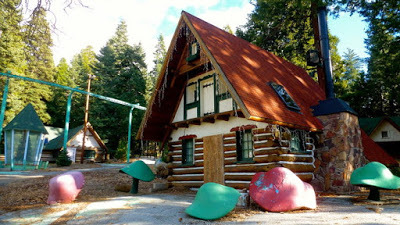
SKY PARK AT SANTA’S VILLAGE
G'day folks,
The first franchised theme park in the world became a ghost town and is now a beautifully restored village and adventure park.
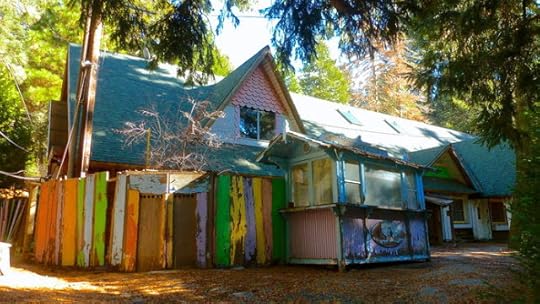
A once-grand and ambitious North-Pole-themed amusement park, Santa’s Village in California, sat abandoned on the aptly named Rim of the World Highway. Several years later, the park has re-opened as a scenic outdoor amusement park with activities and attractions for all ages.
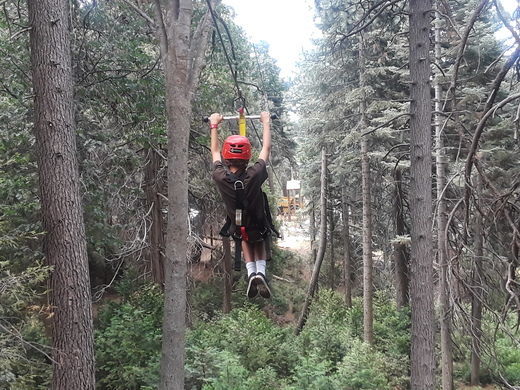
The popular and familiar Santa’s Village once whirred and hummed with the activity of hundreds of mechanical decorations, theme park rides, mobile and light-up characters as far as the eye could see. Now it has returned as a park offering attractions such as downhill and cross-country mountain biking, zip-lining, bouldering, rock climbing, and more. Guests can still return for a Nostalgic Christmas in the Woods each November.

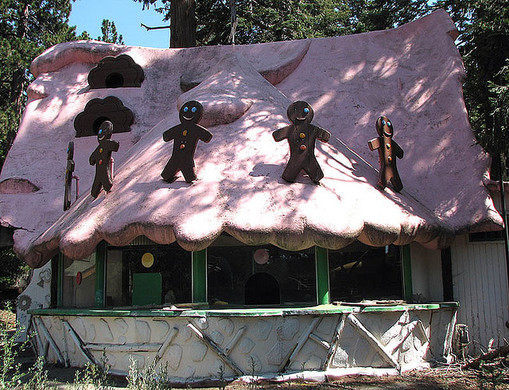
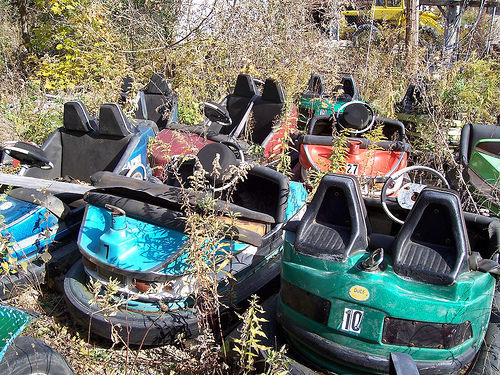


Clancy's comment: Well, I often post places that have been abandoned, but this one has been brought back to life. Good for them.
I'm ...

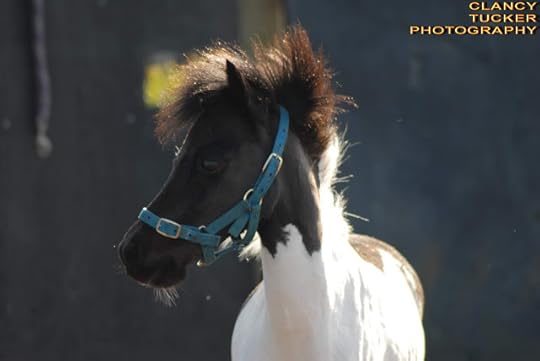
Published on March 10, 2019 14:27
March 9, 2019
10 March 2019 - Dangerous Insects at Welt Der Gifte in Greifswald, Germany
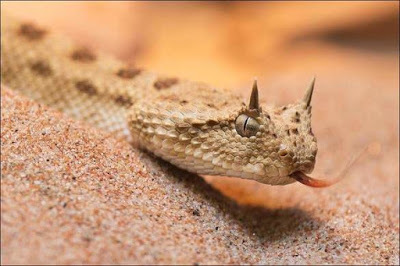
Dangerous Insects and Venomous Animals at Welt Der Gifte in Greifswald, Germany
G'day folks,At this exhibit on the world of poison, venomous animals steal the show. For an institution that isn’t a zoo or a park, the Welt Der Gifte in Greifswald, Germany is home to a surprising number of reptiles and insects, but only of the venomous variety. The permanent exhibit dedicated to the world of poison was put together by Doctor Nils Kley, a veterinary expert from the Friedrich-Loeffler-Institut. Kley spent two years assembling the living and nonliving exhibits. The museum, which opened in 2017, aims to spread knowledge about poisons and their role in various aspects of life.

While the focus is on venomous animals, it also includes organic as well as inorganic toxins such as poisonous plants and seeds, mushrooms, microorganisms, poisonous elements, and their various compounds. The facility can only be visited by booking a guided tour, with four different main topics to choose from: Toxins in Nature, Toxins in Daily life, Healing Toxins, and Toxins in Art and Fashion.
Depending on the individual topic, visitors will be able to observe the bacteria Clostridium botulinum under the microscope and learn about its connection to botox injections; understand unexpected and delicious means of intoxication such as quail, pineapple, or cinnamon; wonder about weird fashion trends such as arsenic clothes; touch real blow pipes from Brazilian indigenous tribes; and see several real-life ingredients from Harry Potter’s potions classes.

But the show stealers are the snakes, lizards, scorpions, spiders, and toads—around 30 in total—all of which produce deadly venom within their bodies. They can be observed at close quarters and the tours explain their relation to the biology of poison.
Visitors can also book additional tours, photo sessions, and handling or husbandry courses.

Clancy's comment: No doubt, young kids would find this exhibit interesting.I'm ...


Published on March 09, 2019 13:08
March 8, 2019
9 March 2019 - AMAZING FACTS ABOUT THE GERBIL

AMAZING FACTS ABOUT THE GERBIL
G'day folks,
Here is a critter you have probably never heard of. Gerbils have a quiet and calm nature. They are inquisitive and curious and not easily startled.
 Gerbils were originally known as ‘desert rats’ before they were introduced to North America and Europe as a companion species. Although they are rodents, they are a distinct group of animals from rats.Gerbils are able to shed their tail if it gets caught. This self-defence adaptation allows them to escape predators that are able to catch their tail as they try to flee. Their tails are around the same size as the rest of their body.Gerbils build extensive networks of underground tunnels. They spend most of their time in these burrows, only tending to leave to find food and water.Gerbils’ whole bodies, including their tails, are covered with fur. This is important for protecting them from getting sun-burnt in the hot desert regions.Gerbils have a quiet and calm nature. They are inquisitive and curious and not easily startled.When sensing danger, the normally quiet gerbil will let out a squeal and thump its back legs like a rabbit to warn others of the threat.
Gerbils were originally known as ‘desert rats’ before they were introduced to North America and Europe as a companion species. Although they are rodents, they are a distinct group of animals from rats.Gerbils are able to shed their tail if it gets caught. This self-defence adaptation allows them to escape predators that are able to catch their tail as they try to flee. Their tails are around the same size as the rest of their body.Gerbils build extensive networks of underground tunnels. They spend most of their time in these burrows, only tending to leave to find food and water.Gerbils’ whole bodies, including their tails, are covered with fur. This is important for protecting them from getting sun-burnt in the hot desert regions.Gerbils have a quiet and calm nature. They are inquisitive and curious and not easily startled.When sensing danger, the normally quiet gerbil will let out a squeal and thump its back legs like a rabbit to warn others of the threat.
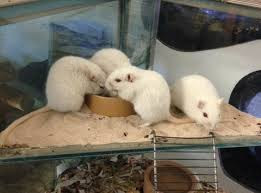
There are over 100 different species of gerbil. The largest being the Great Gerbil, Rhombomys opimus, which is native to Turkmenistan and can grow up to 16 inches long. The most common species kept as a pet is the Mongolian gerbil, Meriones unguiculatus. The Mongolian gerbil’s scientific name means ‘small-clawed warrior’.Rather than using water, gerbils wash using sand. They roll around in the sand, which gets any debris off them and leaves them with a smoother and shinier coat.Gerbils are social animals, and live in groups in the wild. In domestic situations, unfamiliar gerbils are likely to be very aggressive to each other if forcibly introduced while still having contrasting scents.Gerbils are playful animals, and will often box and wrestle each other. Grooming is often carried out simultaneously here, illustrating that it is not an aggressive act. These dummy-fights can be vital for allowing young gerbils to learn to defend themselves in later life. It also helps maintain social bonds, although in adults such boxing can become a means of establishing rank in the dominance hierarchy.

Clancy's comment: They do make good pets. Cute, eh?
I'm ...


Published on March 08, 2019 12:31
March 7, 2019
8 March 2019 - THE MIRACLE PINE OF JAPAN
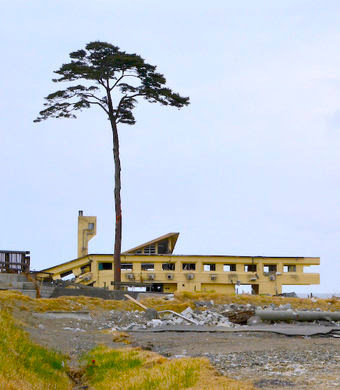
THE MIRACLE PINE OF JAPAN
G'day folks, Of the 70,000 trees that once lined the shore of Rikuzentakata, Japan, only one remained after the 2011 tsunami.
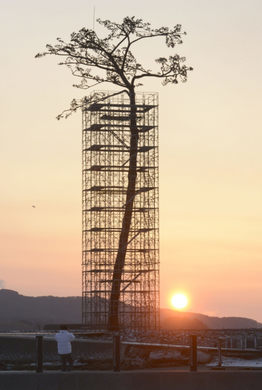
The tree quickly became an icon of hope in the devastation, where about 80% of the homes in Rikuzentakata were lost in the waters. Unfortunately, although the nearly 90-foot-tall, 200-year-old tree lived through the floods, it couldn’t survive the resulting saline content in its earth, and 18 months later it died. However, a sculpture erected in 2013 returned the tree permanently to the shore, with its trunk coated and formed over a metal mold and its leaves and branches synthetically remade.
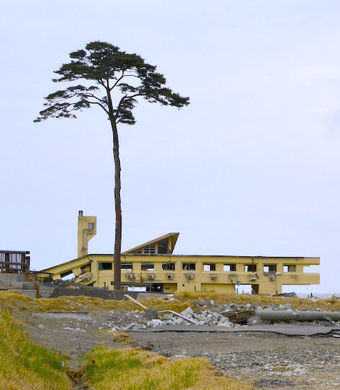

 Clancy's comment: Good for them. Tsunami's certainly are unforgiving and mean beasts.
Clancy's comment: Good for them. Tsunami's certainly are unforgiving and mean beasts.I'm ...


Published on March 07, 2019 13:18
March 6, 2019
7 March 2019 - MAKING A LIVING FROM RUBBISH IN NICARAGUA
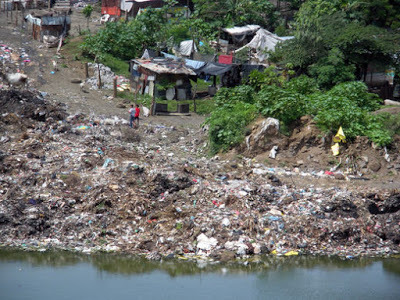
MAKING A LIVING FROM RUBBISH IN NICARAGUA
G'day folks,
The largest garbage dump in all of Central America is home to a tragic community that make their living from the refuse.
Located in Nicaragua, the municipal landfill known as La Chureca (slang for “city dump”) is a massive open dumpster that has attracted a community of extremely impoverished citizens who came to the land to make a living and simply never left.
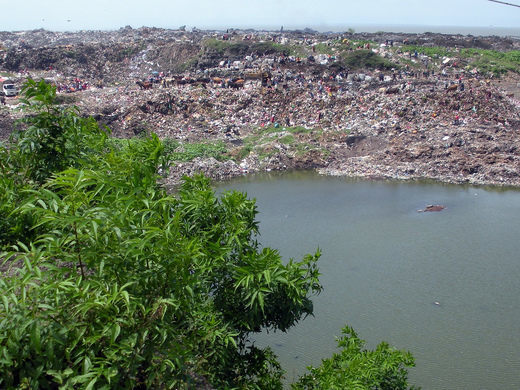
Located on four square miles of land in Managua, Nicaragua, the huge dump site was established shortly after an earthquake destroyed a majority of the city in the early 1970’s. The rubble and waste was brought to the site, creating what is now the largest landfill in Central America. Soon after it was created impoverished citizens of the nearby areas began coming to the landfill to see what scraps or valuables they could sift from the detritus. As the landfill grew, so did the number of scavengers.

While most of the workers reporting to the landfill would simply arrive for the day and then leave when they had finished, some began to simply stay at the site, soon growing to a permanent community. Some created makeshift hovels out of the garbage while others build larger homes complete with fences and gardens. The group of permanent residents eventually grew to over a thousand members who would venture out into the sea of trash to look for valuable pieces of metal or plastic to sell or use in their constructions, or simply look for food.

At one point, the population of “Churequeros,” as they are known was almost 50% under the age of eighteen, and lived facing the constant threats of disease, wild animals, poisons and a host of other terrible conditions that all came along with living in a garbage dump. Recent years have seen some improvement with the creation of a processing and recycling plant which now employs and houses hundreds of the people living on the site.

Clancy's comment: What can I say? It is 2019 isn't it?
I'm ...
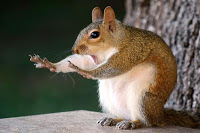

Published on March 06, 2019 12:45
March 5, 2019
6 March 2019 - RARE PHOTOGRAPHS FROM THE PAST

RARE PHOTOGRAPHS FROM THE PAST
G'day folks,
Here are some great old photographs. You might recognize a few characters.
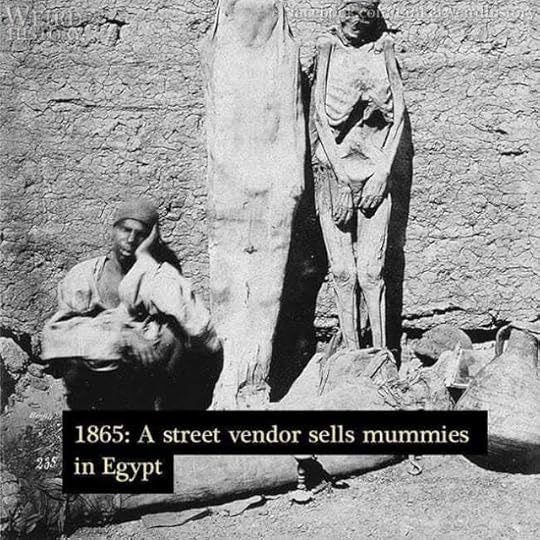
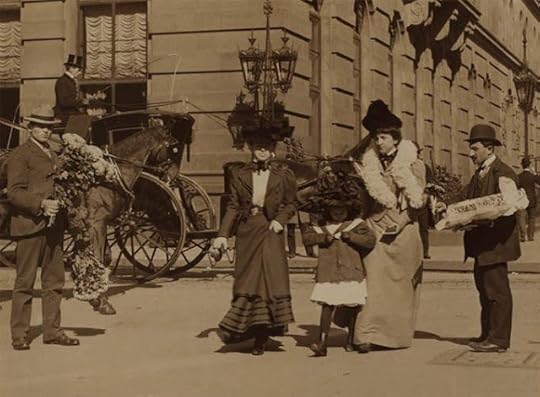










Clancy's comment: I wonder if the bulletproof vest worked?
I'm ...


Published on March 05, 2019 12:56
March 4, 2019
5 March 2019 - AMAZING NATURE
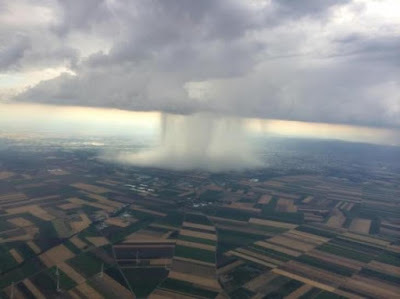
AMAZING NATURE
G'day folks,
I never cease to be amazed by what I see in nature. Check out these examples.









Clancy's comment: Wow, eh?
I'm ...


Published on March 04, 2019 12:43
March 3, 2019
4 March 2019 - THE CROOKED FOREST IN POLAND
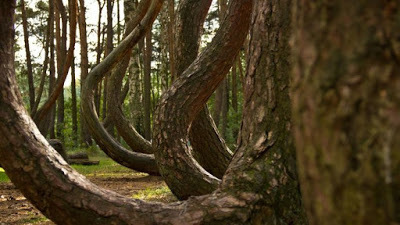
THE CROOKED FOREST IN POLAND
G'day folks,
Here is something odd. Abusive farmers may have stunted trees 80 years ago. Blending science fiction and ecological abnormality, a group of 400 trees in Poland’s Krzywy Las or “the Crooked Forest,” are mysteriously bent. Hovering just inches above the ground, the trees amazingly, and dramatically, take a sharp turn toward the sky, rounding into little J shapes as they make their ascent.

There is no definitive answer for these pines’ bizarre shape, and the stories about them run the gamut from the practical to the bizarre. The most grounded among those seeking answers believe the trees may have simply been buried beneath a terrible snowstorm in their infancy. Others still believe the gravitational pull in that area has morphed their trunks.
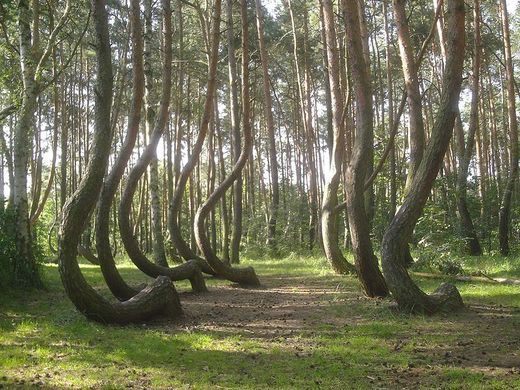
The most intriguing explanation suggests that a local foresters manipulated the trees after planting them in 1925-1928. Apparently, the foresters hoped to make furniture from the bent shapes and intervened when the trees were only 10 years old. Refusing to let the trees grow upwards, the foresters severely stunted their growth. Likely abandoned after start of WWII in 1939, leaving a lasting ecological mark 80 years later.
Every tree in the Crooked Forest has the same haunting bend, but despite bent beginnings, they have all grown to be tall and seemingly unhampered by their C-shape curves. Trees are resilient, and so they continued to thrive, relying on the one branch they had left to take over complete function and grow upwards. Whatever damage occurred to one tree must have happened to them all because they remain uniform in deformity.
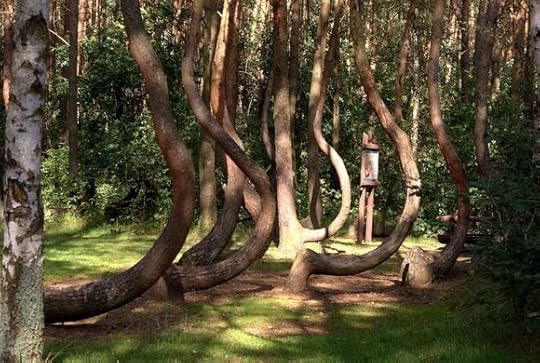
The world may never know if it’s true, as most of the local German population was expelled after the end of World War II and the area was resettled mainly by Poles who had been forced to leave the territory of former eastern Poland annexed by the Soviet Union.
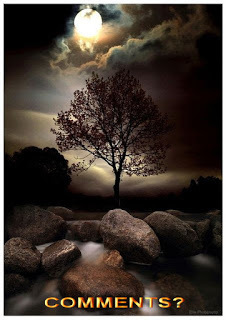
Clancy's comment: Weird, eh? But, the world is full of strange things ... Even humans.
I'm ...
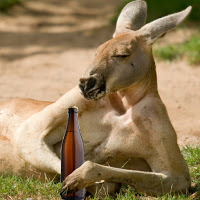

Published on March 03, 2019 13:55
March 2, 2019
3 March 2019 - BUTTER MOULDS OF YESTERYEAR
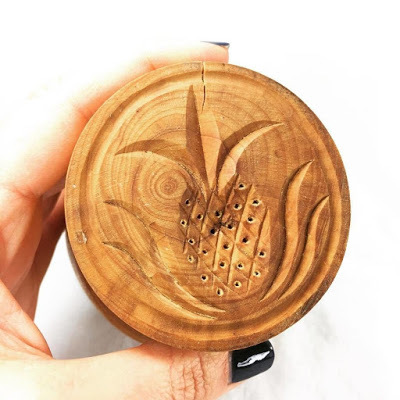
BUTTER MOULDS OF YESTERYEAR
G'day folks,
I bet you haven't seen one of these for a while.These intricate stamps are relics from a time when dairy farmers beautifully branded their products.
Even before artists began carving life-sized cows from enormous blocks of butter, 18th- and 19th-century dairy farmers were expressing their creativity through creamery. Butter molds, usually carved from wood, were a way for farmers to add panache to their product while also offering their customers a way to identify it, especially important as dairy began to be sold at the market and not directly from the farm.

Archaeologists have unearthed molds for shaping foods that date as far back as ancient Babylon. Molding butter for table centerpieces became especially popular during the Renaissance, when butter sculptures graced regal banquet tables, but these tended to be sculpted by hand. Around the 19th century in northern Europe, known for its dairy culture and its cooler climes, farmers used large wooden butter molds, called smørstaup. Around the same time, American dairy farmers also started utilizing carved wooden butter molds for a decorative flair.

Many wooden molds were shaped like bells that were spacious enough to hold a pound of butter. The stamp itself was a carved insert that would occupy the top of the inner space, and was attached attached to a long handle. After the cream was churned and washed (washing butter gets rid of leftover whey and helps butter keep longer), it would be ready for molding. Once packed into the cavity, the butter pressed against the top would take on the impression of the stamp’s etching. The handle could then be used like a plunger to push the stamped butter out, its curved top revealing the carved design.
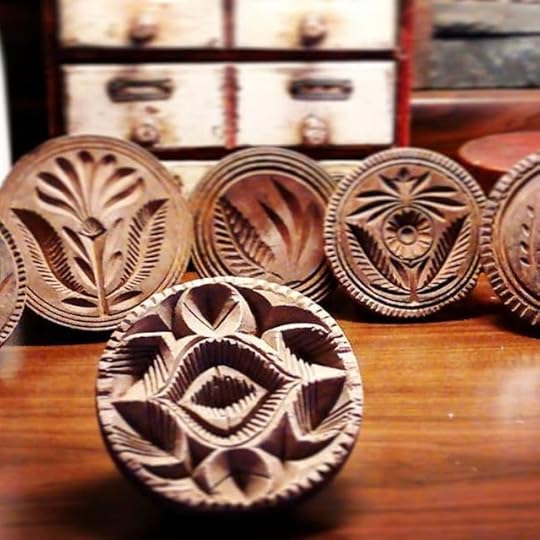
American butter molds often displayed intricate designs of tulips, farm animals, and wildlife, or, sometimes, the ornate etching of a pineapple. Why pineapples? The pineapple was indigenous to the Americas, and thus a symbol for early settlers of their new home. The fruit, however, was difficult to obtain and expensive to purchase. In turn, pineapples became a perfect representation of status and hospitality, and, similar to the sculpted butter centerpieces of the Renaissance banquets, pineapples represented “a visual apogee of the table display.” In other words, for the perfect dinner party, forget the foie gras and bring on the butter pineapples.
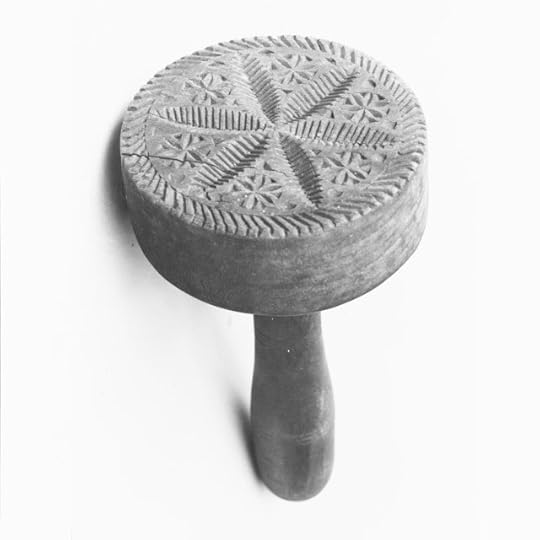
In the United States, butter molds represent important pieces of material culture. Many people collect vintage molds, which can be found at antique shops across the country, while museums include them as part of their collections.

Clancy's comment: Ah, back in the days when people took pride in their work.
I'm ...


Published on March 02, 2019 14:32



